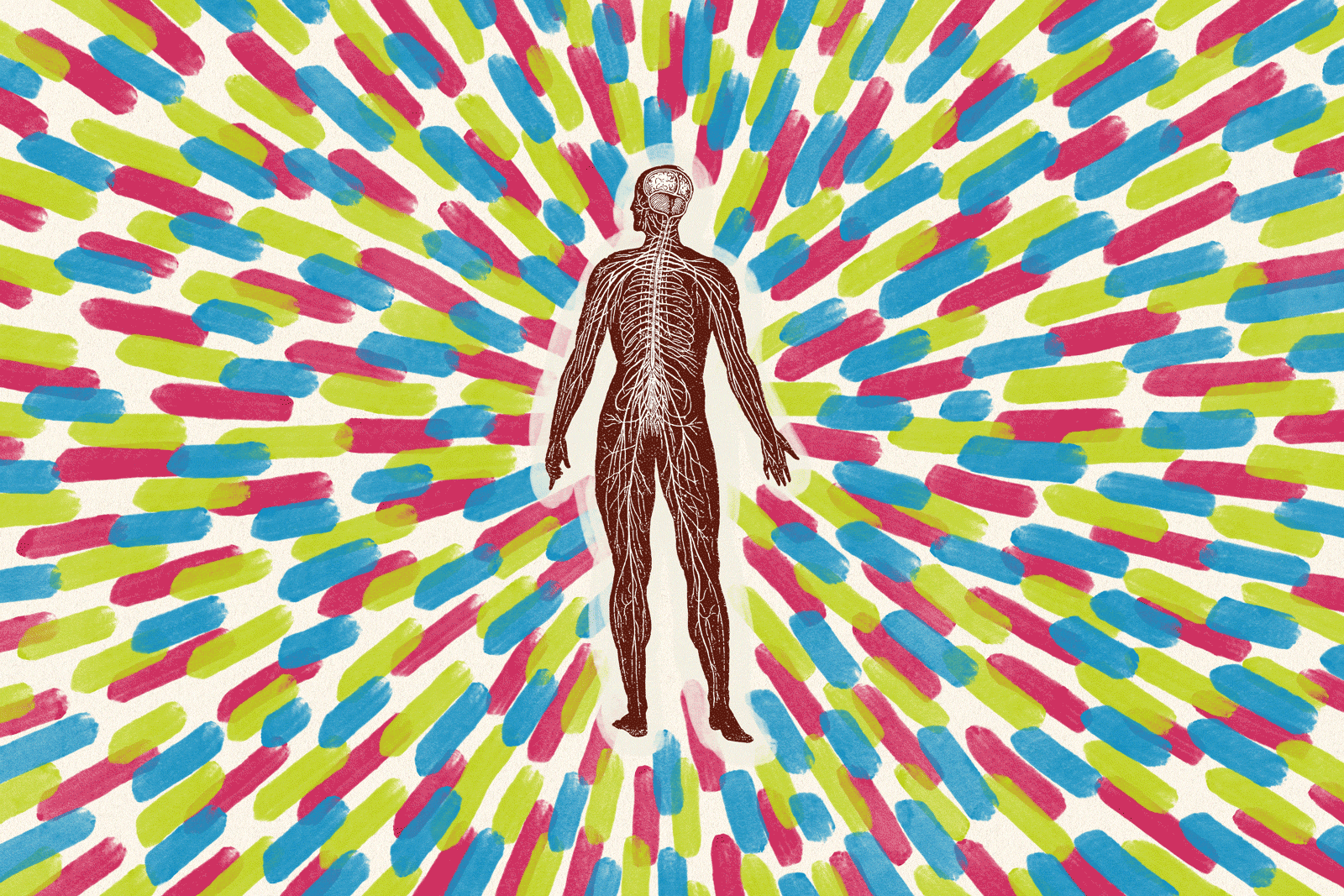San Diegan Sets Goals as Head of National Institute of Mental Health
The excitement in the voice of Dr. Lewis L. Judd when he talks about his new job might surprise some people, at least those with a view of psychiatrists as remote and uncaring.
Later this month, Judd hopes to accelerate changes in that view toward the mental health field when he becomes director of the National Institute of Mental Health, the premier mental health agency of the United States and perhaps the world. The NIMH, located in Rockville, Md., sponsors more than $500 million annually in research as well as helping fund state and local clinical programs nationwide.
“We are at the beginning of a golden age in understanding how to treat the mentally disordered,” Judd said in an interview at UC San Diego. The 57-year-old Judd is taking an indefinite leave of absence as chairman of the Department of Psychiatry at the UCSD School of Medicine, where he is credited with building one of the nation’s leading academic departments during his 10-year tenure.
“The next two decades are going to be incredibly exciting, with many new discoveries in molecular biology that will advance our understanding of how the brain functions,” he said. “ . . . We now realize that if there is a major disturbance in behavior that is observable, then, intuitively, there is a dysfunction in the biology of the brain itself. This will have enormous relevance for precise treatments of various disorders as we link behavioral aspects to the biology.”
Judd sees the role of the NIMH, a federal institute, as larger than funding basic research. He also wants to improve the way that people receive mental health services, particularly the mentally ill homeless, to ensure that the best possible care is available--without the social stigma that still exists in peoples’ attitudes toward the profession.
“I’d like to blur the ‘hard’ versus ‘soft’ science dichotomy,” he said, which often pits research in molecular biology against empirical observations of behavior by an individual or group. “Rather, I want to promote ‘good science’ ranging from the molecular base of mental disorders to the most effective way to deliver services.
“So the result will be that what is being delivered in the trenches will be the most modern, effective diagnostic approaches.”
Judd has long attempted the marriage of academic research and provision of ongoing care. In 1986, he proposed that UCSD join with San Diego County to create an academic mental health center to help turn around the scandal-plagued county hospital that provides care for San Diego’s impoverished and violently mentally ill. Judd’s proposal was spurned by county supervisors, in large part because of bureaucratic reluctance to give up partial control of the system.
“It is ironic, isn’t it, that I have been asked to head the nation’s major mental health agency, yet I have never been asked to input locally to the county?” Judd said.
A team of private doctors who studied the county’s mental health system said last month in a report that chronic mismanagement as well as funding problems are to blame for longstanding problems.
“I leave San Diego with regret at the failure of the community to take on the responsibility for a superb, high-quality mental health system,” Judd said. “San Diego is an absolutely wonderful place to live and given the fact that the area is increasingly sophisticated . . . it’s a tragedy for the county, and especially for (mentally disordered) patients and their families.”
But Judd hopes to accomplish in part on the national level what he was unable to carry out on the local level.
NIMH, established during World War II to deal with the explosive issue of what was then called “battle fatigue,” is uniquely suited for carrying out and supporting a wide range of research and experimental clinical projects.
The number of military personnel suffering psychological problems had proven a surprise to doctors, who had little understanding that mental disorders could be as disabling as physical injuries, that they could be not be controlled by a person any more than a major wound could be healed without outside medical help.
NIMH provided the first leadership in studying the nature of such disorders and gave legitimacy to the mental health field, Judd said, by spurring development of psychiatric training programs at hospitals and creation of clinical treatment programs.
“The war helped in the evolution of American psychiatry as a major research field,” Judd said. “And we have made tremendous progress in this area, where treatment of casualties from psychiatric disorders has improved greatly with each war. Today, most Vietnam veterans (who suffered disorders) can be treated so they can live out their lifetime without being disabled . . . and Israeli studies show that (because of the research) they lose fewer and fewer men to such disorders.”
Care of Homeless
Judd said that he will be a “quick study” on the mentally ill homeless, who symbolize the challenge facing the psychiatric profession today. NIMH has a strong responsibility to sponsor demonstration programs that can effectively care for people such as the homeless, Judd said, and to judge the results empirically so that successful projects can be duplicated elsewhere.
“Clearly it’s a problem that is a blight and seems to be uniquely visible at this time,” Judd said. “The reasons are many.
“In a sense, there was an incomplete transition of closing state hospitals and putting people into community-based treatment centers because we did not really create and fund a full range of services in those centers.
“Also, we may have oversold in some cases the promise of new technology and (drugs) for treatment, and there still remains a need for some chronic patients to remain in a protective setting.”
In addition, Judd raised the issue now being thrashed out in New York state courts over the right of a person to refuse treatment--”those persons on the street who are terribly disabled mentally but are not a danger to themselves or to others.”
“It’s a fascinating debate and results perhaps partly from the traditional fear of mental health professionals ‘putting away’ people in hospitals as (portrayed) in movies like ‘One Flew Over the Cuckoo’s Nest.’
“That’s virtually impossible to do today, to keep in a person against their will, but there is still a caricature in how the profession is portrayed by the media.”
Many people still regard mental disorders suspiciously, he said, expecting people with mental disabilities to be able to cure themselves if they really wanted to.
“We look at the homeless and feel that if they only got their act together, they could lift themselves up, whereas we would never believe that about someone who has cancer or some other physical disease.”
That suspicion rubs off onto those providing care, he said.
“You know the line about ‘You must be crazy to be a psychiatrist’ or ‘Gee, you’re the most normal psychiatrist that I know.’ If you look at the numbers, about 20% of the population will have a disorder at some point in their life, such as depression, or anxiety, as well as more serious ones. So all families will have some experience with either a relative or friend. So we have to destigmatize the view that these disorders are something to be ashamed of, change the idea that they are something brought upon the self and (have people understand) they are brought on by a combination of genetic and environmental events.”
The profession still lacks many answers, Judd said, which only increases the importance of the ongoing NIMH research.
“The brain is really the last frontier for scientists,” Judd said. “And while at the same time it regulates the physiology of the body, a sort of monitoring station, it can be profoundly affected by its environment and can become disturbed in its reaction to the environment.
“It’s a most complicated field, so our field is, in many ways, taking on the most elusive problems.
“But the reason why I am so excited is that I see what progress we have made during the time of my own career, in learning about the full range of how disorders manifested themselves and in how genetics play a role.
“The reasons are many.
“In a sense, there was an incomplete transition of closing state hospitals and putting people into community--based treatment centers because we did not really create and fund a full range of services in those centers.
“Also, we may have oversold in some cases the promise of new technology and (drugs) for treatment, and there still remains a need for some chronic patients to remain in a protective setting.”
In addition, Judd raised the issue now being thrashed out in New York state courts over the right of a person to refuse treatment--”those persons on the street who are terribly disabled mentally but are not a danger to themselves or to others.”
“It’s a fascinating debate and results perhaps partly from the traditional fear of mental health professionals ‘putting away’ people in hospitals as (portrayed) in movies like ‘One Flew Over the Cuckoos’s Nest.’
“That’s virtually impossible to do today, to keep in a person against their will, but there is still a caricature in how the profession is portrayed by the media.”
“Today, 80% of disorders can be managed so that they do not distort a person’s life in perpetuity, that we can plan appropriate treatment and have available many more medications and therapeutic approaches.
“And I believe that soon we will be able to deliver even more innovations.”
More to Read
Sign up for Essential California
The most important California stories and recommendations in your inbox every morning.
You may occasionally receive promotional content from the Los Angeles Times.










